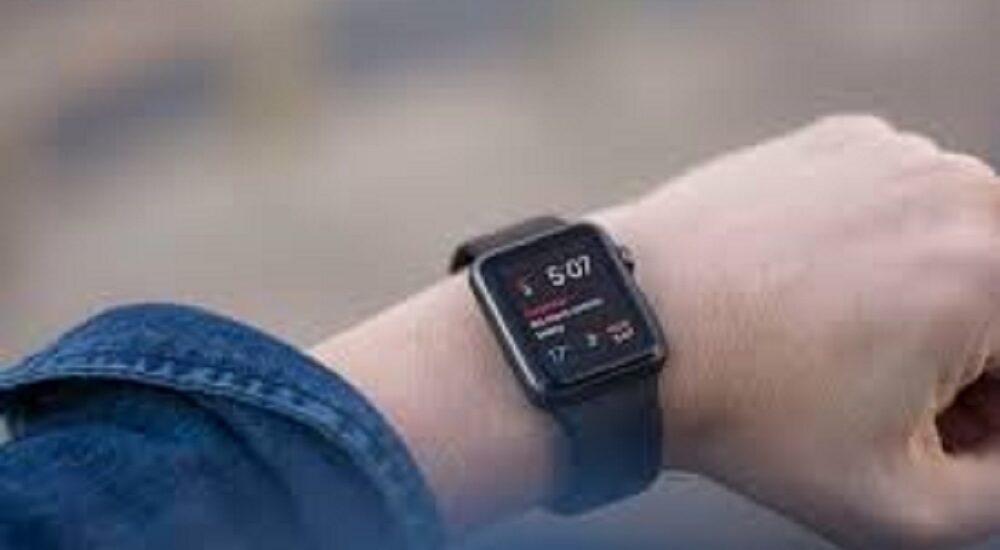In your journey to enhance fitness, understanding how to improve Apple Watch VO2 Max is essential. This measure, often utilized by elite athletes to gauge cardiovascular efficiency, is now accessible right on your wrist. In this guide, we’ll walk you through each step to optimize your VO2 Max readings on your Apple Watch.

Table of Contents
Understanding VO2 Max
VO2 Max, short for Volume Oxygen Maximum, is a critical measure in the sports science field. It represents the maximum amount of oxygen an individual can use during intense or maximal exercise.
This metric is a reliable indicator of cardiovascular endurance. For instance, a higher VO2 Max value means that your body can consume more oxygen, which translates to better aerobic endurance and overall cardiovascular health.
Step 1: Ensure Your Apple Watch Is Updated
Accurate readings require updated software. Apple regularly releases updates that refine and enhance the watch’s performance metrics, including VO2 Max calculations. To check and update:
- Open the Watch app on your iPhone.
- Go to ‘General’, then ‘Software Update’.
- If there’s an available update, download and install it.
Source: Apple Support
Ensuring that you’re on the latest software not only optimizes VO2 Max calculations but also enhances other health metrics, ensuring you get the most comprehensive data possible.
Click here for more articles like this – How To Fix Apple Watch Issues: A Comprehensive Guide
Step 2: Wear Your Watch Correctly
A good fit is paramount for accurate readings. The sensors on the Apple Watch need consistent skin contact to measure data effectively.
- The watch should be snug but not too tight.
- It should sit flat against your wrist.
- Position the watch at least a finger’s width above the wrist bone.
This positioning allows the sensors to work optimally, ensuring more accurate readings of your heart rate and other metrics that contribute to your VO2 Max calculation.
Step 3: Consistent Workout Calibration
Calibration improves the watch’s accuracy by adapting to your personal gait and pace. To recalibrate effectively:
- Choose an outdoor activity in the Workout app, like walking or running.
- Ensure GPS and Location Services are active on your paired iPhone.
- Conduct the exercise for at least 20 minutes.
Source: Apple Support
Consistent recalibration, especially after software updates or long periods of inactivity, can significantly improve the accuracy of all workout and health metrics, including VO2 Max.
Step 4: Monitor and Analyze Your Data
Regularly monitoring your VO2 Max can give insights into cardiovascular improvements or potential areas of concern. The Health app on your iPhone consolidates this data, showing trends and changes over time.
Step 5: Increase Exercise Intensity Gradually
Improving your natural VO2 Max entails a commitment to more intense, consistent exercise. However, it’s crucial to increase intensity gradually to avoid injury and ensure safety. Before embarking on new fitness regimens, always consult with a fitness professional to tailor a program to your needs.
Frequently Asked Questions (FAQs) About Improving Apple Watch VO2 Max
How often should I recalibrate my Apple Watch for accurate VO2 Max readings?
It’s a good practice to recalibrate your watch after software updates or if you notice any inconsistencies in your health metrics. Doing outdoor workouts like walking or running at least once a month can help maintain its accuracy.
Can I solely rely on my Apple Watch for all my fitness data?
While the Apple Watch provides a plethora of data and insights, it should be used as a supplementary tool. For comprehensive health assessments, always consult with healthcare or fitness professionals.
Why is my VO2 Max reading not improving even with regular workouts?
Various factors affect VO2 Max, including genetics, age, and overall health. While exercise can improve VO2 Max, the rate and extent of improvement may vary among individuals. Ensure you’re varying your workouts, focusing on nutrition, and getting adequate rest.
Can I improve my VO2 Max without an Apple Watch?
Absolutely! The Apple Watch is a tool for tracking and monitoring. The real work happens through consistent exercise, a balanced diet, and adequate recovery. However, without a device like the Apple Watch, you may need alternative methods or professional assessments to measure VO2 Max.
Is a higher VO2 Max always better?
Generally, a higher VO2 Max is an indicator of better cardiovascular fitness. However, it’s essential to note that VO2 Max can vary with age, gender, and fitness levels. It’s just one aspect of overall health, and it’s crucial to focus on a holistic approach to wellness rather than one metric alone.
How do age and gender affect VO2 Max readings?
VO2 Max tends to decrease with age. Men typically have a higher VO2 Max than women, primarily because of differences in body composition and hemoglobin levels, which affect oxygen delivery to muscles.
How accurate are the Apple Watch’s VO2 Max readings compared to lab tests?
While the Apple Watch provides reasonably accurate VO2 Max estimates for many users, laboratory tests remain the gold standard for precision. Factors like positioning, skin contact, and calibration can affect the watch’s readings.
If you have more specific questions or concerns regarding VO2 Max or any other health metrics, it’s always best to consult with a healthcare or fitness professional.
How to Improve Apple Watch VO2 Max: Conclusion
Enhancing your Apple Watch VO2 Max readings is a balanced blend of technology and personal fitness improvement. By following these steps, ensuring your watch is calibrated, and focusing on your own cardiovascular health, you can enjoy more accurate and potentially improved VO2 Max readings.
